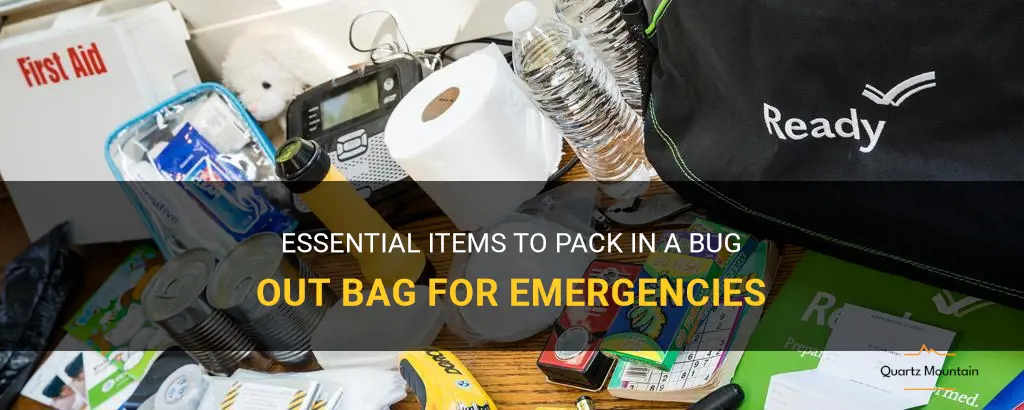
In times of emergencies or crises, being prepared can make all the difference. One essential item that everyone should have ready is a bug out bag. This bag contains everything you would need to survive if you had to quickly leave your home and evacuate to a safer location. From food and water to first aid supplies and tools, there are several essential items that should always be packed in a bug out bag. Whether you're facing a natural disaster, a power outage, or a global pandemic, having your bug out bag stocked and ready to go could be a lifesaver.
| Characteristics | Values |
|---|---|
| Food | Non-perishable, easy to prepare |
| Water | At least 1 gallon per person per day |
| Shelter | Tent, tarp, sleeping bag |
| Clothing | Extra layers, hat, gloves, sturdy shoes |
| First Aid Kit | Bandages, medication, disinfectant, gloves |
| Tools | Knife, multi-tool, flashlight, matches |
| Communication | Cell phone, charger, walkie-talkie |
| Navigation | Map, compass, GPS |
| Personal Documents | ID, passport, insurance information |
| Cash | Small bills and coins |
| Extra Batteries | For electronic devices |
| Hygiene Products | Toothbrush, toothpaste, soap |
| Personal Protection | Gas mask, gloves, goggles |
| Fire Starting | Lighter, waterproof matches, firestarter |
| Emergency Blanket | Reflective, compact |
| Whistle | Signal for help |
| Cash | Small bills and coins |
| Entertainment | Deck of cards, book |
| Important Contacts | Friends, family, emergency services |
What You'll Learn
- What are the essential items that should always be included in a bug out bag?
- How much food and water should I pack in a bug out bag, and what types of food are best for long-term storage?
- Are there any specific medical supplies that should be included in a bug out bag, and how should they be stored?
- How should I choose a durable and versatile backpack for my bug out bag?
- Are there any additional tools or equipment that are recommended for inclusion in a bug out bag, such as a multi-tool or a fire starter?

What are the essential items that should always be included in a bug out bag?
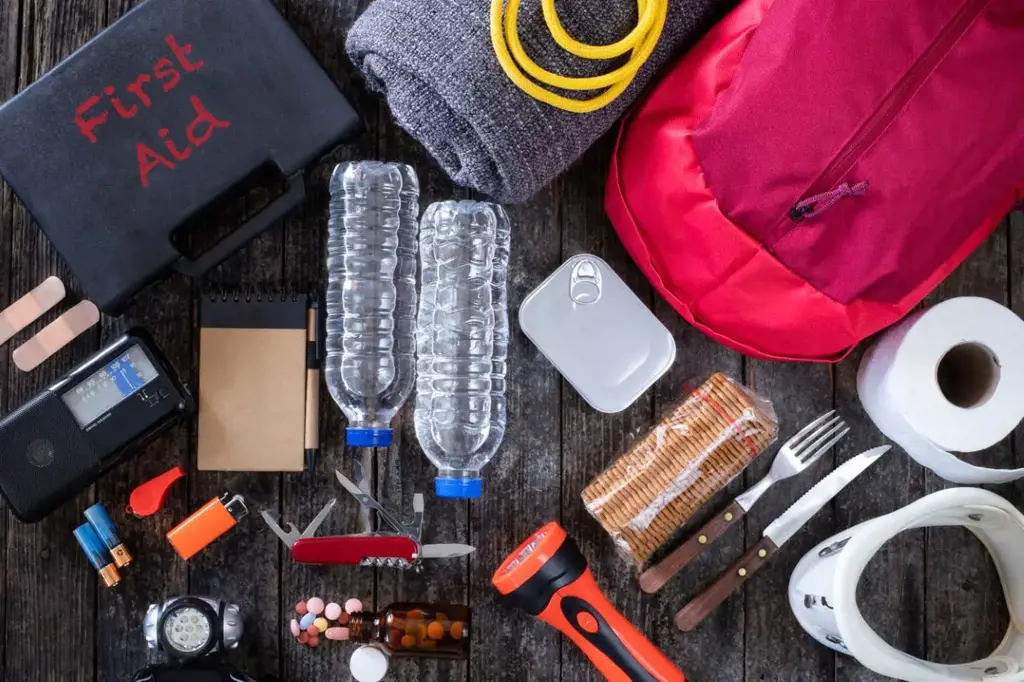
A bug out bag, also known as a go bag or survival kit, is a portable collection of essential items that can be quickly grabbed in case of an emergency or evacuation. While the specific contents of a bug out bag may vary depending on individual needs and geographic location, there are several essential items that should always be included to increase your chances of survival in a crisis situation.
First and foremost, water is the most crucial item to have in a bug out bag. Dehydration can set in quickly during an emergency, so it's important to have an adequate supply of water to drink. The general recommendation is to have at least one gallon of water per person per day for drinking and sanitation purposes. It's also a good idea to include water purification tablets or a portable water filter in case you need to obtain water from a natural source.
Next, food is another essential item that should be included in your bug out bag. Choose non-perishable, high-calorie foods that are easy to prepare and have a long shelf life. Examples include canned goods, energy bars, and freeze-dried meals. Aim for a three-day supply of food per person, but consider additional supplies if you anticipate a longer evacuation period.
Alongside water and food, a bug out bag should also contain essential medical supplies. Include a basic first aid kit with bandages, antiseptic wipes, pain relievers, and any necessary prescription medications. Personal hygiene items such as toilet paper, wet wipes, and hand sanitizer are also important for maintaining cleanliness and preventing the spread of germs in emergency situations.
Another crucial item to include in your bug out bag is a reliable means of communication. A fully charged cell phone with a portable charger is recommended, but it's important to have alternative communication methods in case cellular service is unavailable. Consider including a battery-powered or hand-crank radio to stay informed about current news and emergency broadcasts.
Additionally, it's important to have tools and equipment that can help with survival tasks. A multi-tool, flashlight, and extra batteries are essential items to include. A fire starter or waterproof matches can be crucial for warmth and cooking in emergency situations. A compass and a map of your local area are also helpful for navigation purposes, especially if you need to evacuate to an unknown location.
Lastly, it's important to have appropriate clothing and personal protection items in your bug out bag. Include a change of clothes, including sturdy footwear, in case you need to quickly leave your home or shelter. Consider the climate and weather conditions in your area when selecting clothing items. Additionally, protective gear such as gloves, a dust mask, and safety goggles can be essential for personal safety, especially in situations where there may be debris or hazardous materials.
In conclusion, a bug out bag should always include essential items such as water, food, medical supplies, communication tools, tools and equipment, appropriate clothing, and personal protection items. These items will greatly increase your chances of survival in emergency situations and help you to stay self-sufficient until help arrives or you can reach a safe location. Customize your bug out bag based on your specific needs and don't forget to periodically check and update the contents to ensure everything is in working order and not expired.
Essential Items to Pack for an Unforgettable Trip to Egypt and Jordan
You may want to see also

How much food and water should I pack in a bug out bag, and what types of food are best for long-term storage?
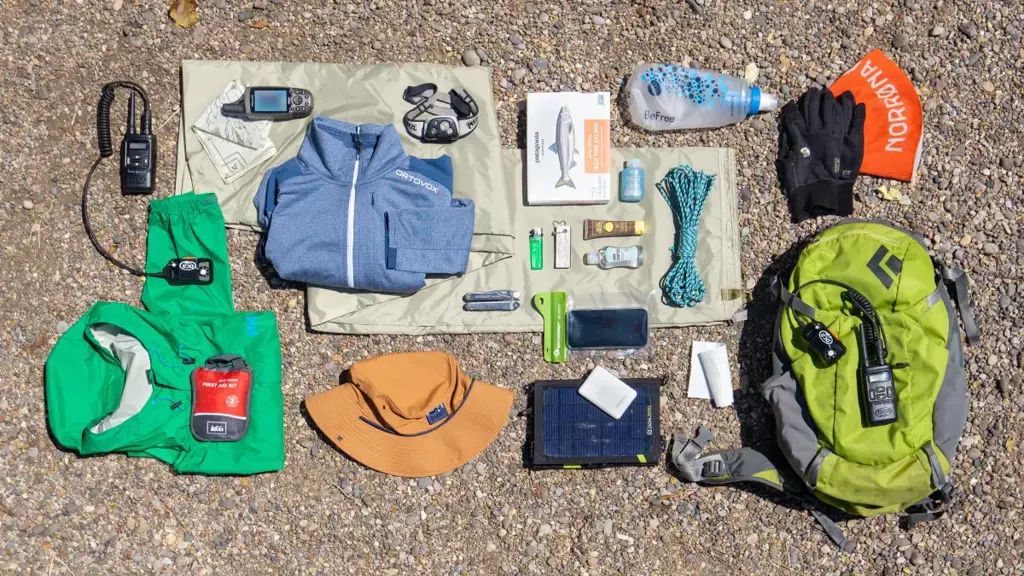
When preparing a bug out bag, it is crucial to consider how much food and water you should pack. In emergency situations where you may need to evacuate quickly, having an adequate supply of sustenance is essential to your survival. Additionally, knowing which types of food are best for long-term storage can help ensure that you have a dependable source of nourishment.
Water is the most critical resource to include in your bug out bag. The general rule of thumb is to pack at least one gallon of water per person per day. However, in certain situations, this may not be feasible due to weight restrictions or limited storage space. In such cases, including a portable water filtration system or purification tablets can help ensure a continuous supply of potable water by allowing you to purify water from natural sources.
In terms of food, it is recommended to pack enough non-perishable items to last you at least 72 hours. This duration allows for short-term emergencies where rescue or assistance is expected within that time frame. However, it is always prudent to be prepared for the unexpected and pack additional supplies if possible.
When selecting food for long-term storage, consider items that are lightweight, compact, and have a long shelf life. Some ideal options include:
- Dehydrated or freeze-dried meals: These meals are lightweight, easy to prepare, and have a long shelf life. They also retain most of their nutritional value and are available in a variety of flavors.
- Energy bars or granola bars: These compact snacks provide a quick source of energy and can be easily consumed on the go. Look for options that are high in protein and contain a balanced combination of nutrients.
- Canned goods: Canned foods such as beans, fruits, vegetables, and soups are excellent choices for long-term storage. They have a long shelf life, provide essential nutrients, and require minimal preparation.
- Nut butters: Peanut butter or almond butter are nutritious and high in calories, making them an excellent addition to your bug out bag. They are also versatile and can be paired with other food items or eaten on their own.
- Jerky or dried meat: These protein-rich snacks are lightweight, non-perishable, and provide essential nutrients. They are an excellent option for those who prefer meat-based protein sources.
It is essential to periodically inspect and replace the food items in your bug out bag to ensure their freshness and suitability for consumption. Pay attention to expiration dates and rotate your supplies accordingly. Additionally, consider individual dietary needs and preferences when selecting food items for your bug out bag.
In conclusion, when packing a bug out bag, it is crucial to include an adequate supply of food and water. Aim for at least one gallon of water per person per day and pack enough non-perishable food items to last at least 72 hours. Choose lightweight, compact, and long-lasting options such as dehydrated meals, energy bars, canned goods, nut butters, and jerky. Regularly inspect and replace your supplies to ensure their freshness and suitability for consumption. By following these guidelines, you can be better prepared for emergencies and ensure your survival in challenging situations.
Essential Items to Pack for a Disneyland Trip with Toddlers
You may want to see also

Are there any specific medical supplies that should be included in a bug out bag, and how should they be stored?
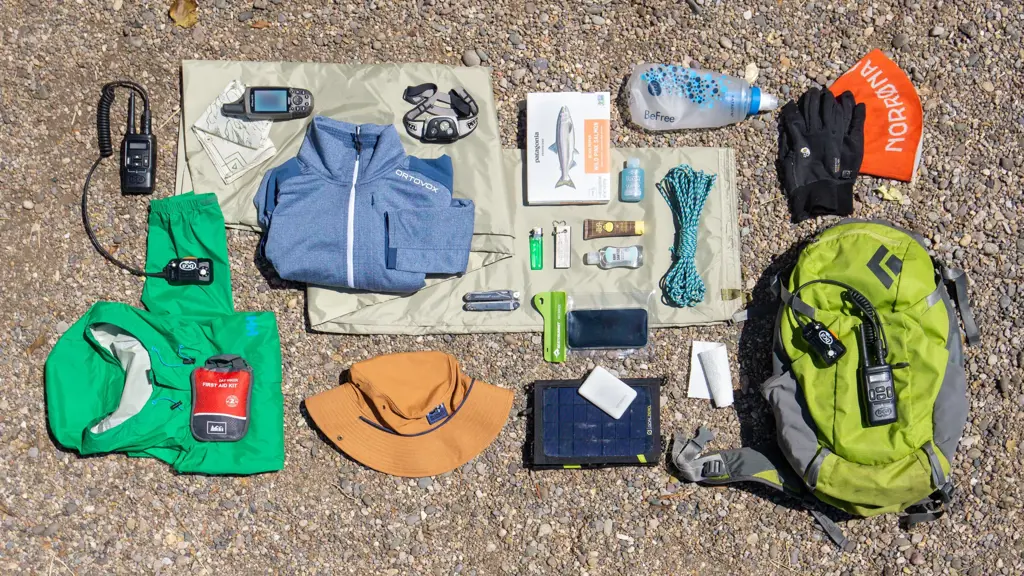
When it comes to preparing for an emergency situation or natural disaster, having a well-stocked bug out bag is essential. A bug out bag is a portable kit that contains essential items needed to survive for at least 72 hours. One important aspect of a bug out bag is having the necessary medical supplies to address any potential injuries or illnesses that may arise. In this article, we will discuss some specific medical supplies that should be included in a bug out bag and how they should be stored.
One of the first medical supplies that should be included in a bug out bag is a basic first aid kit. This should contain items such as adhesive bandages, gauze pads, antiseptic wipes, and medical tape. These items can be used to clean and dress small wounds or injuries. It is important to regularly check the expiration dates on these items and replace them when necessary.
In addition to a basic first aid kit, it is also important to include medications that may be needed in an emergency situation. This may include over-the-counter pain relievers, such as ibuprofen or acetaminophen, as well as any prescription medications that individuals in your group may need. It is important to store these medications in a waterproof container to protect them from moisture and ensure their efficacy.
Another important medical supply to have in a bug out bag is a comprehensive first aid manual. This can provide instructions on how to handle various medical situations, from minor cuts and bruises to more serious injuries. It is important to familiarize yourself with the manual's contents and practice some basic first aid techniques prior to an emergency situation.
In addition to the above supplies, it may also be beneficial to include items such as a tourniquet, emergency blanket, instant cold packs, and a CPR mask in your bug out bag. These items can help address more serious injuries or situations that may arise. It is important to store these items in a way that keeps them protected from the elements, such as in waterproof bags or containers.
When it comes to storing medical supplies in a bug out bag, it is important to organize them in a way that makes them easily accessible and protected. Consider using zippered pouches or small storage containers to keep items separated and organized. Labeling these containers can also help you quickly locate specific items when needed. It is also important to regularly check the contents of your bug out bag and replace any expired or used items.
Overall, having the necessary medical supplies in a bug out bag is crucial for ensuring the health and well-being of yourself and your group in an emergency situation. Including items such as a basic first aid kit, medications, and a first aid manual can help address minor injuries or illnesses. Additionally, including items such as a tourniquet, emergency blanket, and CPR mask can help address more serious situations. Storing these supplies in a way that keeps them organized and protected will help ensure their efficacy when needed.
The Ultimate Guide to Packing for a September Trip to Disney World
You may want to see also

How should I choose a durable and versatile backpack for my bug out bag?
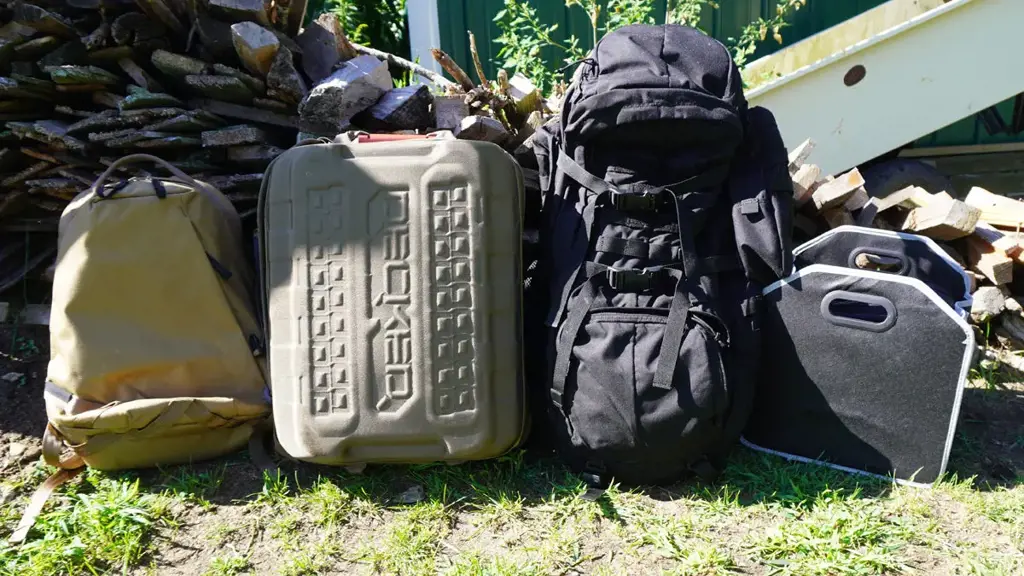
When it comes to selecting a backpack for your bug out bag, durability and versatility are key factors that should not be overlooked. Your bug out bag is essentially your lifeline in an emergency situation, so you want to ensure that the backpack you choose is able to withstand the rigors of any situation and provide you with the functionality and flexibility you need. Here's how to select a durable and versatile backpack for your bug out bag.
- Determine your needs: The first step in choosing a backpack is to assess your specific needs. Consider the items you plan to carry in your bug out bag, as well as the type of terrain and climate you may encounter. This will help you determine the size and features you require in a backpack.
- Look for durability: When it comes to backpacks, durability is crucial. Look for backpacks made from high-quality materials such as nylon or Cordura, as these materials are known for their strength and resistance to tears and abrasions. Check for reinforced stitching and sturdy zippers, as these are often the areas that are prone to damage.
- Consider the weight: A heavy backpack can quickly become a burden, so it's important to consider the weight of the backpack itself. Look for backpacks that are lightweight without compromising on durability. Some backpacks are made with lightweight materials such as ripstop nylon, which can help reduce the overall weight of the bag.
- Check the comfort features: Since you may be carrying your bug out bag for extended periods of time, comfort is paramount. Look for backpacks with adjustable padded straps, as these can help distribute the weight evenly across your shoulders and back. Additionally, consider backpacks with a padded hip belt, as this can transfer some of the weight to your hips, reducing strain on your shoulders.
- Evaluate the organization and storage options: Versatility is key when it comes to bug out bags, so look for backpacks with ample storage pockets and compartments. This will allow you to organize your gear effectively and access it quickly when needed. Additionally, consider backpacks with external attachment points, such as Molle webbing or daisy chains, which can provide additional options for securing equipment to the outside of the bag.
- Test it out: It's important to physically try on the backpack and test it out before making a final decision. Put some weight in the bag and walk around for a while to see how it feels. Pay attention to any discomfort or pressure points and make sure the straps are easy to adjust. Additionally, check for any potential design flaws that may hinder your ability to access your gear quickly.
In conclusion, choosing a durable and versatile backpack for your bug out bag requires careful consideration of your specific needs and a thorough evaluation of the backpack's features. By prioritizing durability, weight, comfort, organization, and storage options, you can ensure that your bug out bag is equipped with a backpack that will serve you well in any emergency situation. Remember to test out the backpack before making a final decision, and always prioritize functionality and reliability over aesthetics.
Essential Items to Pack for Your Next Travel Nurse Assignment
You may want to see also

Are there any additional tools or equipment that are recommended for inclusion in a bug out bag, such as a multi-tool or a fire starter?
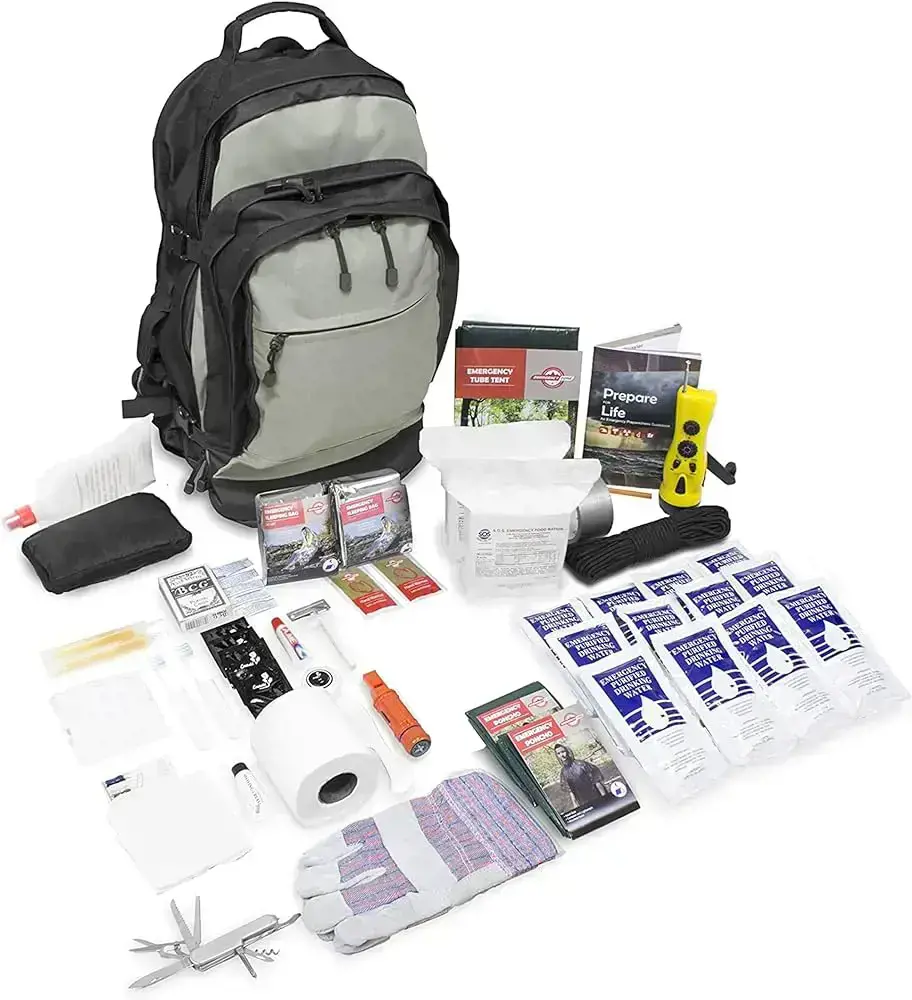
A bug-out bag is an essential item for anyone who wants to be prepared for emergencies or disasters. It contains all the necessary items to sustain yourself for at least 72 hours in the event that you need to evacuate your home quickly. While the basic items like food, water, and a first aid kit are essential, there are also several additional tools and equipment that can be valuable additions to a bug-out bag.
One of the most versatile and indispensable tools to include in a bug-out bag is a multi-tool. A multi-tool typically includes a variety of tools such as pliers, a knife, screwdrivers, and a can opener, all in one compact device. This makes it incredibly useful for a wide range of tasks, from repairing gear to opening cans of food. Having a multi-tool in your bug-out bag can save valuable space and eliminate the need to pack several individual tools.
Another important tool to consider including in your bug-out bag is a fire starter. Fire is essential for warmth, cooking food, and purifying water, so having a reliable method of starting a fire is crucial. There are several options available, including waterproof matches, lighters, and fire starter kits. It is a good idea to include multiple fire-starting methods in your bug-out bag to ensure you have a backup in case one fails.
A folding saw is another useful tool that can come in handy during an emergency situation. It can be used to cut firewood, clear debris, or build a shelter. Look for a folding saw with a sharp and durable blade that can easily fit in your bug-out bag.
A portable water filter or purification tablets can also be essential tools to include in your bug-out bag. Clean drinking water is vital for survival, and having a way to purify water from natural sources such as rivers or lakes can be lifesaving. There are several portable water filters available on the market that can remove bacteria and parasites, making water safe to drink. Additionally, water purification tablets can be a lightweight and convenient option for disinfecting water.
A headlamp or flashlight should also be included in your bug-out bag. Having a reliable source of light can be invaluable in an emergency, especially during nighttime or in dark areas. Look for a headlamp or flashlight that is compact, lightweight, and has a long battery life. Consider storing extra batteries or a portable solar charger to ensure your light source stays functional.
In conclusion, while the basic essentials like food, water, and a first aid kit are crucial in a bug-out bag, there are several additional tools and equipment that can be valuable additions. Including a multi-tool, fire starter, folding saw, portable water filter, and a headlamp or flashlight can greatly increase your chances of survival in an emergency or disaster situation. It is important to choose tools that are compact, versatile, and durable to ensure they can withstand the demands of a bug-out scenario. By properly equipping your bug-out bag with these additional tools, you can be better prepared for whatever challenges come your way.
Essential Items for Your Trip to Jamaica: A Packing Checklist
You may want to see also
Frequently asked questions
A bug out bag, often referred to as a BOB, is a portable kit filled with essential items that you would need to survive for at least 72 hours during an evacuation or emergency situation.
When deciding what to pack in a bug out bag, you should consider including items such as water, non-perishable food, a first aid kit, a multi-tool, extra clothing, a flashlight, a portable phone charger, a map and compass, a tent or emergency shelter, and personal hygiene items.
It is recommended to pack at least one gallon of water per person per day in a bug out bag. This ensures that you have enough water for hydration, cooking, and basic sanitation needs. It's also a good idea to include water purification tablets or a water filter in case you run out of stored water.
When choosing a backpack for a bug out bag, look for one that is durable, comfortable to wear, and has multiple compartments for better organization. Consider the size of the bag and how much weight you can comfortably carry. It's also important to choose a bag that is water-resistant or comes with a rain cover to protect your gear.
It is essential to update your bug out bag regularly to ensure that the contents are still usable and meet your current needs. You should review and restock your bug out bag every six months to a year, checking expiration dates on food and medications and replacing any items that have been used or damaged.







